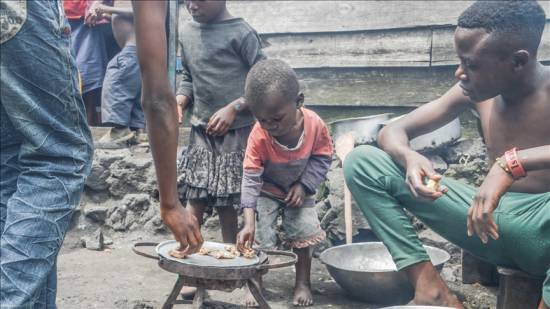From Sahel to Horn of Africa, millions face severe food insecurity: UN
The UN said on Friday that up to 18 million people in Africa’s Sahel region will face severe food insecurity over the next three months, the highest number since 2014, while there was also a warning about drought-induced food scarcity extending to East Africa as well.
Jens Laerke, Geneva spokesman for the United Nations Office for the Coordination of Humanitarian Affairs (OCHA), issued the warning at a UN news conference on the Sahel, which cuts across northern parts of Africa from west to east.
He said that 7.7 million children under the age of 5 are expected to suffer from malnutrition in the Sahel.
“Some 1.8 million are severely malnourished. If aid operations are not scaled up, this number could reach 2.4 million by the year’s end,” said Laerke.
“Driving this is a combination of violence, insecurity, deep poverty, and record-high food prices in the region.”
Alarming levels
The OCHA spokesman said that the situation had reached alarming levels in Burkina Faso, Chad, Mali, and Niger, where people will experience emergency levels of food insecurity during the lean season between June and August.
World Food Program’s (WFP) Geneva spokesman Tomson Phiri said at the same news conference: “Needs are sky-high, but resourcing is at rock bottom, meaning WFP is facing severe funding shortfalls.
“In Chad, low funding levels have forced the WFP to reduce emergency rations for IDPs (internally displaced people) and refugees to 50% since June 2021.
“If no further contributions are received, assistance will be cut off in early July 2022 for refugees and IDPs in the Lake region.”
He said that in Mauritania, the WFP will continue to distribute reduced assistance to refugees, with the food component of the hybrid food-cash rations being cut by 50% in one camp.
“Conflict, COVID-19, climate, and rising costs collide to put basic meals out of reach for millions of people in the Sahel,” said Phiri.
Lean season
“The situation is worsening as the annual lean season sets in from June to September,” UN’s Chief Emergency Relief Coordinator Martin Griffiths said a day before.
Griffiths not only spoke of the Sahel’s plight but also about the northeast on the Horn of Africa.
“No one needs this help more urgently than the nearly 35 million people going hungry in the Horn of Africa and in the Sahel right now.
“I saw this at first hand when I had the good fortune, the privilege to visit Kenya last week.”
Griffiths said that after four failed rainy seasons in the Horn, four in a row, more than 18 million people in Ethiopia, Somalia, and Kenya are affected by drought.
“Most of them are hungry, not knowing whether they’ll eat that day or not,” said the UN official.
“It is likely to get a lot worse for more people in the weeks ahead. In Kenya, I was told that the prospect for the next season, from October to December, is as dire as the last four.
“We are looking at the longest drought in the Horn in at least four decades.”/aa


